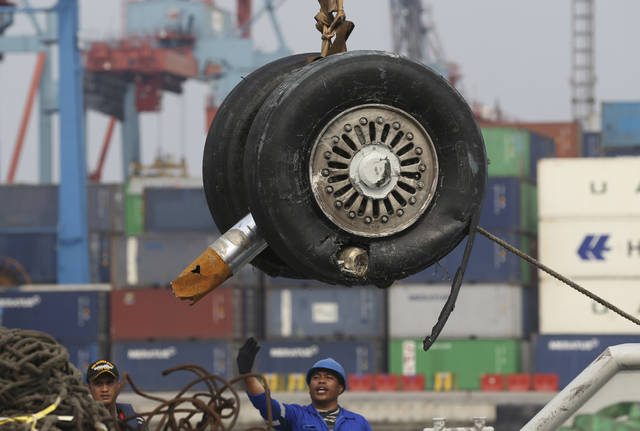JAKARTA, Indonesia— A crucial sensor that’s the subject of a Boeing Co. safety bulletin was replaced on a Lion Air jet the day before it plunged into the Java Sea, Indonesia’s National Transportation Safety Committee said Wednesday.
Boeing said its bulletin, sent to airlines on Tuesday, reiterates guidelines on how pilots should respond to erroneous data from an “angle of attack” sensor following the Oct. 29 crash that killed 189 people.
The sensor keeps track of the angle of the aircraft nose relative to oncoming air to prevent the plane from stalling and diving.
Soerjanto Tjahjono, chairman of the transport safety committee, said Wednesday that airspeed indicator malfunctions on the jet’s last four flights, which were revealed by analysis of the flight data recorder, were intertwined with the sensor issue.
Lion Air’s first two attempts to address the airspeed indicator problem didn’t work and for the Boeing 737 MAX 8 plane’s second to last flight, the angle of attack sensors were replaced, he said.
On that flight, from Bali to Jakarta, the two sensors disagreed. The plane went into a sudden dive minutes after takeoff, which the pilots were able to recover from. They decided to fly on to Jakarta at a lower than normal altitude.
On the basis of the Oct. 28 flight, Indonesian investigators said they’d provided recommendations to Boeing for distribution to airlines around the world about how to deal with a similar situation.
But Boeing said in its statement Wednesday that it was directing airlines to “existing” flight crew procedures to address angle of attack sensor problems.
Boeing said it is continuing to work with the Indonesian investigation.
Indonesia’s search and rescue agency on Wednesday extended the search effort for a second time, saying it will continue until Sunday. Body parts are still being recovered and searchers continue to hunt for the cockpit voice recorder.


